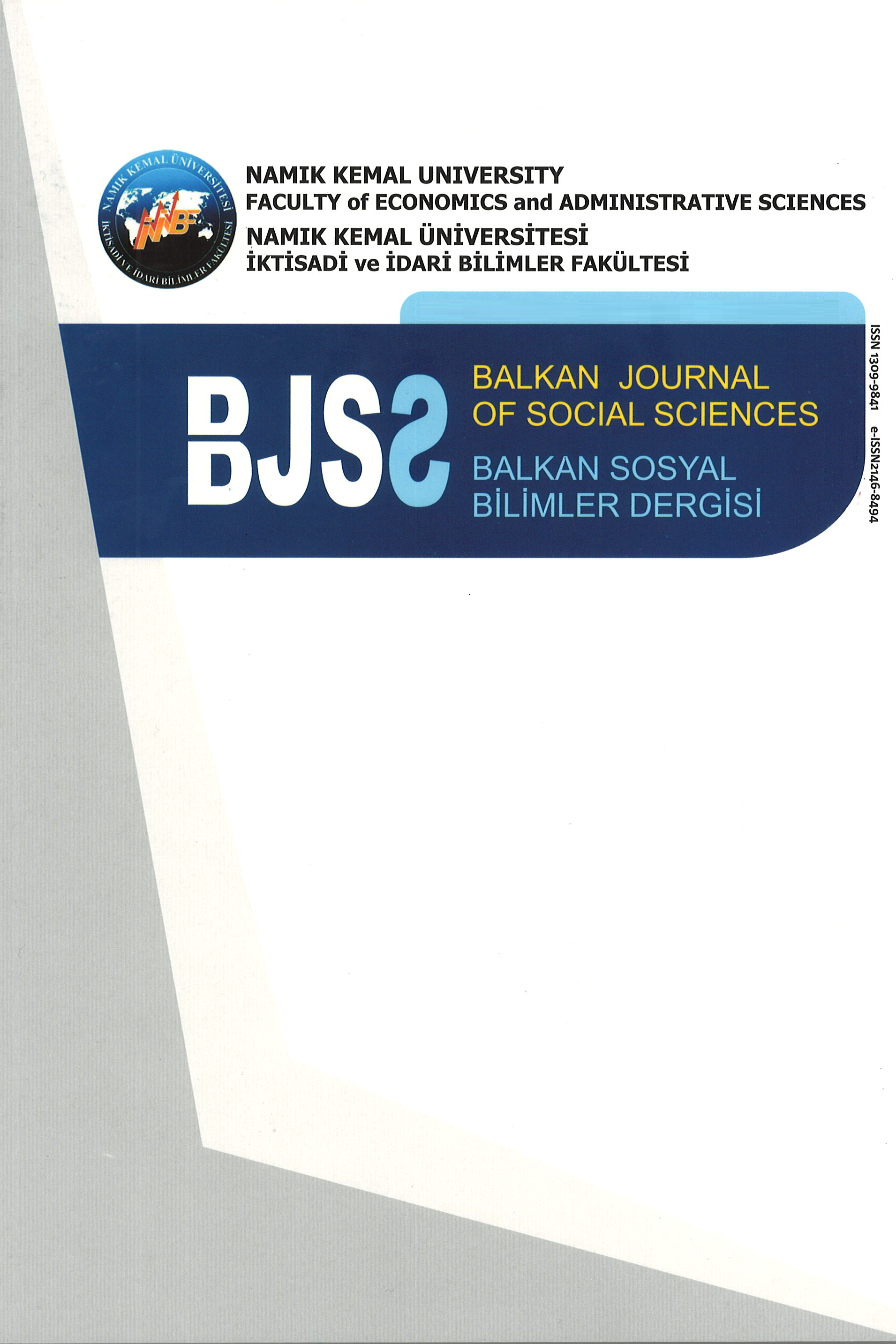TÜRKİYE’DE CARİ İŞLEMLER HESABININ ÖDEMELER DENGESİ İÇİNDEKİ YERİ VE TARİHSEL GELİŞİMİ
Üniversite sanayi işbirliği, modern sanayinin çıkış noktası olan İngiliz sanayi devrimiyle birlikte oluşmaya başlamıştır. 1975-1985 döneminde 1970’lerden bu yana gittikçe yaygınlaşan üniversite-sanayi araştırma işbirliğinin önemi günümüzde bir kat daha artmıştır. Yeni bilimsel bilgiye duyulan ihtiyaç, sanayi ve akademik kurumlar arasındaki bağlantıyı artırmaktadır. Özellikle Küçük ve Orta Boy İşletmeler (KOBİ) içinde bilimsel ve teknik bilginin önemli ölçüde dağılımına ihtiyaç duyulmaktadır. Bu çalışmada dünyada üniversite-sanayi işbirliği önce ele alınacak, daha sonra Türkiye’de üniversite-sanayi işbirliğinin gelişimi incelenecektir.
Anahtar Kelimeler:
Üniversiteler ve Sanayi, Bölgesel Kalkınma, Avrupa Birliği, Türkiye, Trakya Bölgesi
THE PLACE OF THE CURRENT ACCOUNT IN THE BALANCE OF PAYMENTS AND ITS DEVELOPMENT IN TURKEY
Balance of Payments are accounts in which all the economic activities are recorded by goods, services, transfers and asset transactions realized by residents in one country for a certain period of time - for one year. Payments Balance consists of three categories: Current account, capital account and financial account. Current account is current transactions of a country with the rest of the world. It is an economic indicator showing financial needs and saving tendencies of a country. In this paper, the place of the current account in the Balance of Payments and its development in Turkey will be examined
Keywords:
-,
___
- EĞİMEZ, M.ve KUMCU, E. (2011). Ekonomi Politikası, Teori ve Türkiye Uygulaması, 16. Baskı, İstanbul, Remzi Kitabevi.
- GHOSH, A,(1995). “International Capital Mobility Amongst the Major Industrialised Countries: Too Little or Too Much?”, The Economic Journal, 105: 107-128.
- GRUBER J.W ve KAMİN, S.B. (2005). “Explaining the global pattern of current account imbalances”, International Finance Discussion Papers, Board of Governors of the Federal Reserve System, USA.
- GÜLALP, H. (1987). Gelişme Stratejileri ve Gelişme İdeolojileri, 2. Baskı, Ankara,Yurt Yayınları 5
- IMF (2013). Sixth Edition of the IMF's Balance of Payments and International Investment Position Manual (BPM6), International Monetary Fund
- KARLUK, R.(2011). Türkiye Ekonomisi, 2. Baskı, Anadolu Üniversitesi Yayınları, Eskişehir.
- KAZGAN, G. (2006). Tanzimat’tan 21. Yüzyıla Türkiye Ekonomisi, İstanbul, İstanbul Bilgi Üniversitesi Yayınları.
- OBSTFELD, M. (2012). “Does the Current Account Still Matter?”, American Economic Review, 102(3): 1-23.
- OBSTFELD, M.ve ROGOFF, K. (1995). “The Intertemporal Approach to the Current Account”. In G. Grossman and K. Rogoff (eds.), Handbook of International Economics, Vol. 3. Amsterdam: North Holland.
- OBSTFELD, M. ve ROGOFF, K. (1996). Foundations of International Macroeconomics, MIT Press, ch:1.
- ÖZMUCUR, S. (1994). Gelirin Fonksiyonel Dağılımı: 1948-1993, İstanbul, Boğaziçi Üniversitesi.
- RAZIN, A. (1995). “The Dynamic-Optimizing Approach to the Current Account: Theory and Evidence”. In P. Kenen (ed.) Understanding Interdependence: The Macro-economics of the Open Economy. NJ: Princeton.
- SACHS, J. (1981). “The Current Account and Macroeconomic Adjustment in The 1970s”, Brookings Papers on Economic Activity, 1, 201-282.
- SEYİDOĞLU, H. (1993). Uluslararası İktisat, 9. Baskı, İstanbul, Güzem Yayınları.
- TCMB (2014).Türkiye Cumhuriyeti Merkez Bankası, Türkiye’nin Ödemeler Dengesi ve Uluslararası Yatırım Pozisyonu Altıncı El Kitabı’na Geçiş Süreci Hakkında Açıklama, İstatistik Genel Müdürlüğü Ödemeler Dengesi Müdürlüğü, Ağustos 2014.
- Yayın Aralığı: Yılda 2 Sayı
- Başlangıç: 2011
- Yayıncı: Tekirdağ Namık Kemal Üniversitesi
Sayıdaki Diğer Makaleler
İHRACATIN EKONOMİK VE POLİTİK BELİRLEYİCİLERİ: TÜRKİYE İÇİN VAR ANALİZİ UYGULAMASI
Emin Ahmet KAPLAN, Melike Rana DAYIOĞLU
TÜRKİYE’DE CARİ İŞLEMLER HESABININ ÖDEMELER DENGESİ İÇİNDEKİ YERİ VE TARİHSEL GELİŞİMİ
Bige KÜÇÜKEFE, Dündar Murat DEMİROZ
MUSUL OPERASYONUNUN STRATEJİK ÖNEMİ ÜZERİNE
Berna HASANBAŞOĞLU, Özlem DURGUN
BİREYSEL KARAR STİLLERİ VE YÖNETSEL DEĞER İLİŞKİSİ
Füsun Çınar ALTINTAŞ, Ceyda KAVURMACI
Nurdan Oral KARA, Aslı VERGİLİ, Ramazan ERDEM
SÜRDÜRÜLEBİLİRLİK KAVRAMININ AMBALAJ TASARIMINA ETKİLERİNİN İRDELENMESİ
HATAY BÜYÜKŞEHİR YÖNETİMİNDE KARAR VERME SÜRECİNE BELEDİYE BÜROKRASİSİNİN KATILIMI
